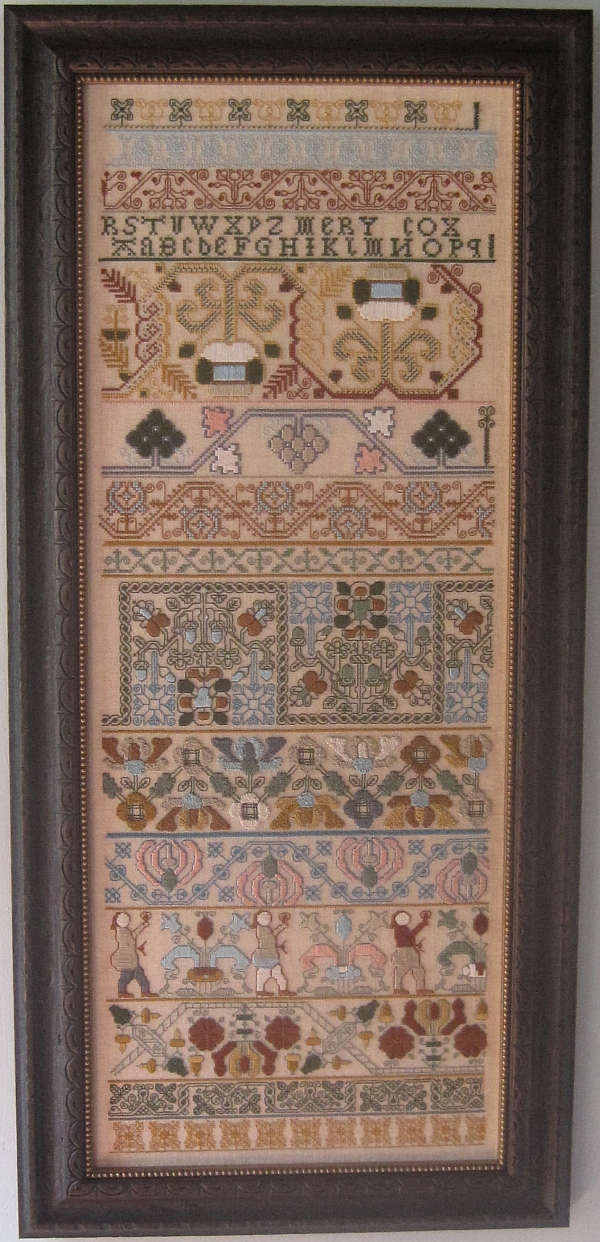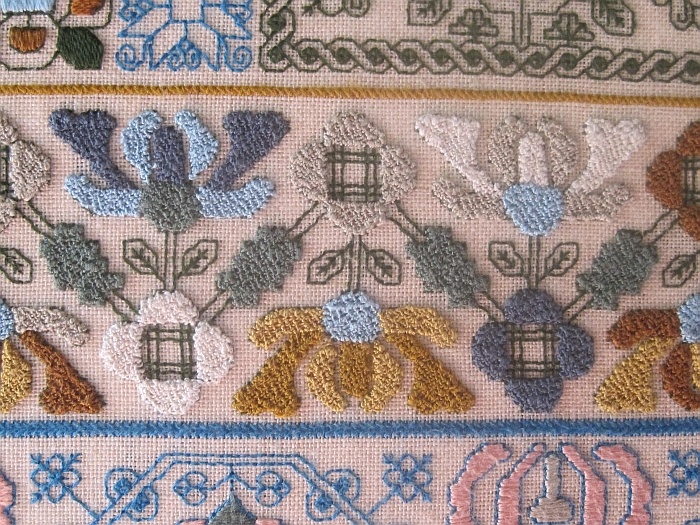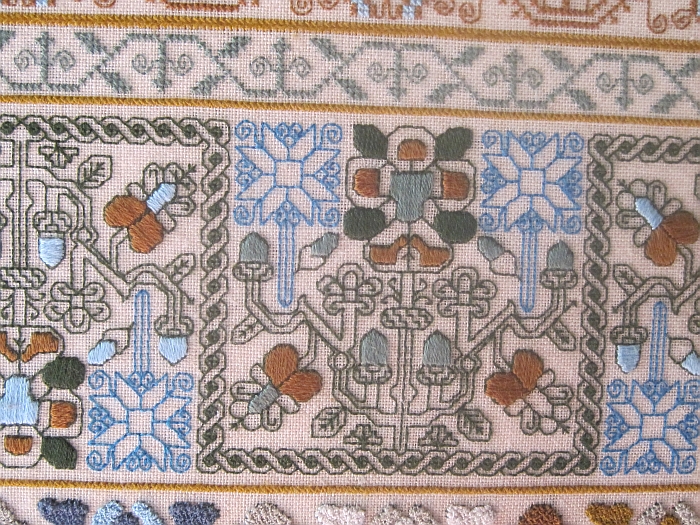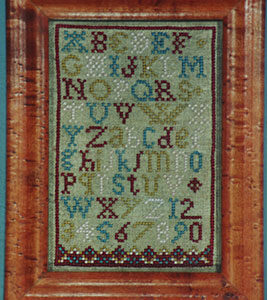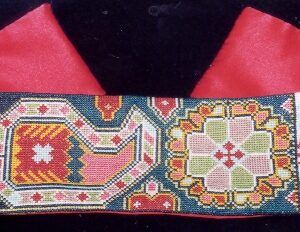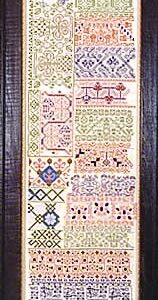Description
A 17th century English band sampler
Samplers of the 17th century are among the finestexamples of this needle art form in existence. An exquisite combination of Renaissance-influenced, intricate pattern bands employing a wide variety of stitch techniques, along with subtle color shading, resulted in a group of distinguished needleworks that were made by young and adult women alike. Before the sampler was relegated to the schoolroom and turned into a rote exercise of practicing alphabets, as transpired through the 19th century, it reigned as the supreme example of the needle’s excellence- hence the derivation of the name itself from the Latin examplar. Mery Cox’s sampler of circa 1670 is a wonderful compilation of unusual stitches, color variations, and ambitious pattern bands incorporating stylized flowers (pansies, carnations, irises, daisies), bunches of grapes, and repeating floral bands executed in double running stitch. Foremost among the motifs are the distinct “boxer” figures in the lower part of the sampler derived, some believe, from putti (little cherubs) in Italian Renaissance art. The term “boxer” refers to their pugilistic stance: however historically they would represent a lover presenting a trophy or a gift to the loved one. Mery’s boxers are not elaborately dressed and their faces remain blank, but there is no mistaking their form and intention. Stitches used in this sampler include double running, cross, Montenegrin cross, long arm cross, and trellis. On 35 count linen the finished sampler will measure approximately 8-1/2″ x 24″. It is recommended for more advanced stitchers.
Additional information
| Format Options |
|---|

